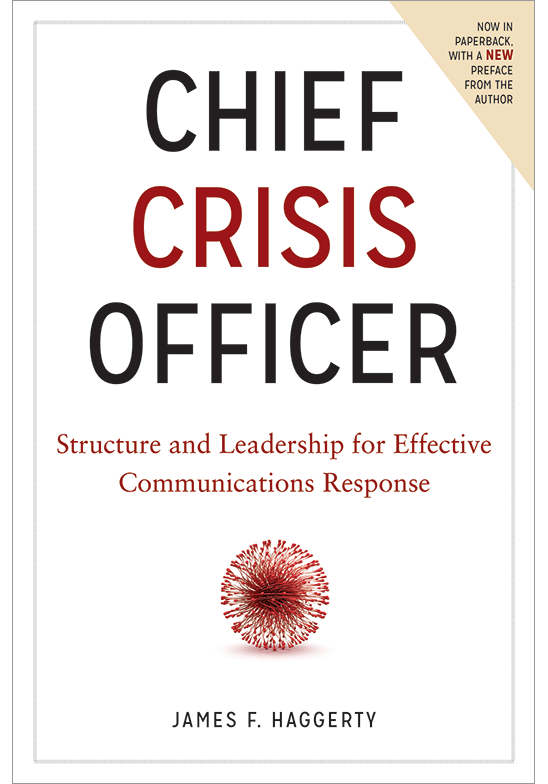‘Chief Crisis Officer’: Control

At my firm, we use a trademarked protocol for the initial response to a crisis we call Control, Information, Response® (CIR). In a crisis, control is key. It can take many forms, but control during crisis response means: (1) control over the site of the events and the points of contact with the crisis; and (2) control over who is saying what to whom and when at various points in the action.
For example, in the BP oil spill, loss of control happened very quickly. BP not only lost control of the spill itself but also over the images of the spill and the way the public perceived those images. This loss was aggravated by the fact that the general public seemed to stop believing what BP and other official sources were saying about the spill very early on in the crisis.
Therefore, the first step in managing a crisis is to get control. You must ensure that you have secured all points of contact — the locations and actors that will influence the course of events during a crisis.
I don’t mean this in an inappropriate manner, by the way; I am not advocating hiding information, covering up, lawyering up, or otherwise restricting access to legitimate and important information about the crisis. Rather, it is about exerting some measure of control over the way the events are unfolding and the manner in which those events are described to the public and other key audiences. Without the right control, the entire perception of a crisis can be radically altered.
Now, some may say a company in crisis should just let information flow freely, confident that the truth will come out. Isn’t this true?
Social Media
Unfortunately, in many— if not most — cases, the answer is a resounding “No.” Particularly in this age of social media, where facts are doled out 140 characters at a time, half a story is the wrong story. In any crisis, be it a simple facility fire or the most complex regulatory investigation, an interested party speaking to the wrong person — for example, a person caught up in the emotions of the moment, or one who has been given inaccurate or false information — isn’t getting the full picture.
Moreover, various actors may have their own issues or concerns that they want to address, or they may not be particularly good at explaining such events in the first place. A consistent, comprehensible message is key.
The control concept holds in virtual crises as well, such as data breaches, litigation and investigations, or attacks on reputation. These crises exist solely in lines of code, the documents of a lawsuit, the recollections of those privy to the facts, or on social media, websites, and other platforms. The first step here is to exercise whatever control you can over the flow of this information to ensure the right message is getting out.
Statue of Liberty
Moving back to the physical realm: Think about our example in Chapter 1, where the industrial fire shrouded the Statue of Liberty in smoke. There were many ways we could have lost control over communications regarding the situation — and almost did. We could have failed to correct the AP reporter who published the first, highly distorted, photos of the fire. We could have allowed others onto the site of the accident to tweet and otherwise report their own unintentionally skewed viewpoint.
Instead, we were able to correct the AP story and give the subsequent news crew what they needed to file a story while, as importantly, also conveying to the news crews the sense that we were being as cooperative as possible given the circumstances. Our “controlled openness” helped minimize the chance that media would pursue different avenues of coverage, like waiting around until employees left the building to see if their perception of events differed from the “official” storyline.
Does this work all the time? No, of course not. Sometimes you’ll try to control the situation and you’ll fail. For example, media may interview employees outside the plant anyway — whether or not you’ve provided them with a steady feed of official information as events unfold. But remember, it is all about increasing the likelihood of a positive result: In the control phase of the CIR process, you are making sure that the message being sent from the scene of a crisis is a correct and accurate one, in a manner that frames the entire way in which a story is presented to public audiences.
This is an abridged version of an article that appeared today on the CrisisResponsePro paid subscription portal. (CrisisResponsePro subscribers can access the full version by clicking here. ID and password are required.) To take advantage of all of the content, data, and collaborative resources CrisisResponsePro has to offer, contact us at info@crisisresponsepro.com.




 Back to Blog
Back to Blog